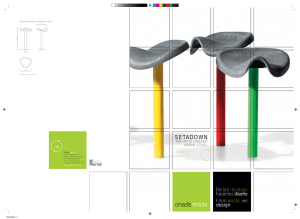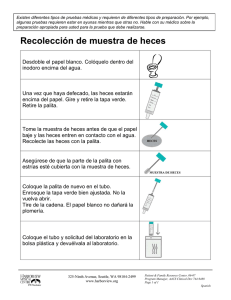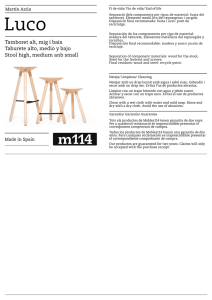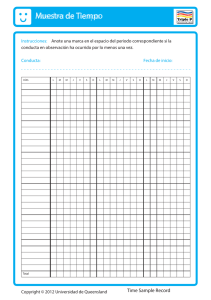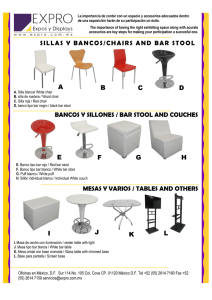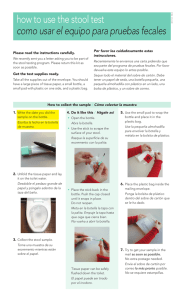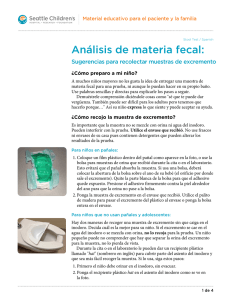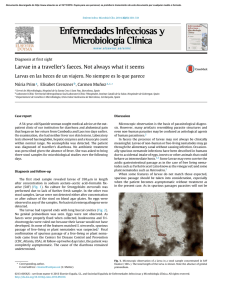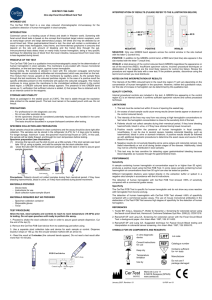Cómo obtener muestras de heces en casa
Anuncio
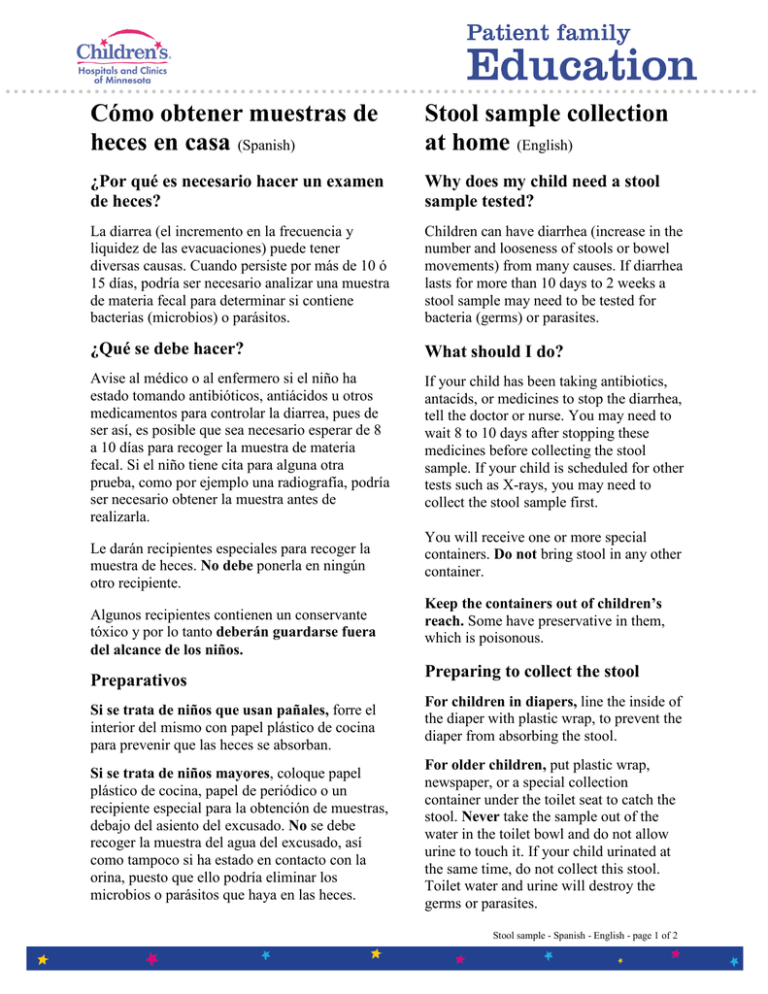
Cómo obtener muestras de heces en casa (Spanish) Stool sample collection at home (English) ¿Por qué es necesario hacer un examen de heces? Why does my child need a stool sample tested? La diarrea (el incremento en la frecuencia y liquidez de las evacuaciones) puede tener diversas causas. Cuando persiste por más de 10 ó 15 días, podría ser necesario analizar una muestra de materia fecal para determinar si contiene bacterias (microbios) o parásitos. Children can have diarrhea (increase in the number and looseness of stools or bowel movements) from many causes. If diarrhea lasts for more than 10 days to 2 weeks a stool sample may need to be tested for bacteria (germs) or parasites. ¿Qué se debe hacer? What should I do? Avise al médico o al enfermero si el niño ha estado tomando antibióticos, antiácidos u otros medicamentos para controlar la diarrea, pues de ser así, es posible que sea necesario esperar de 8 a 10 días para recoger la muestra de materia fecal. Si el niño tiene cita para alguna otra prueba, como por ejemplo una radiografía, podría ser necesario obtener la muestra antes de realizarla. If your child has been taking antibiotics, antacids, or medicines to stop the diarrhea, tell the doctor or nurse. You may need to wait 8 to 10 days after stopping these medicines before collecting the stool sample. If your child is scheduled for other tests such as X-rays, you may need to collect the stool sample first. Le darán recipientes especiales para recoger la muestra de heces. No debe ponerla en ningún otro recipiente. Algunos recipientes contienen un conservante tóxico y por lo tanto deberán guardarse fuera del alcance de los niños. Preparativos Si se trata de niños que usan pañales, forre el interior del mismo con papel plástico de cocina para prevenir que las heces se absorban. Si se trata de niños mayores, coloque papel plástico de cocina, papel de periódico o un recipiente especial para la obtención de muestras, debajo del asiento del excusado. No se debe recoger la muestra del agua del excusado, así como tampoco si ha estado en contacto con la orina, puesto que ello podría eliminar los microbios o parásitos que haya en las heces. You will receive one or more special containers. Do not bring stool in any other container. Keep the containers out of children’s reach. Some have preservative in them, which is poisonous. Preparing to collect the stool For children in diapers, line the inside of the diaper with plastic wrap, to prevent the diaper from absorbing the stool. For older children, put plastic wrap, newspaper, or a special collection container under the toilet seat to catch the stool. Never take the sample out of the water in the toilet bowl and do not allow urine to touch it. If your child urinated at the same time, do not collect this stool. Toilet water and urine will destroy the germs or parasites. Stool sample - Spanish - English - page 1 of 2 Cómo obtener la muestra Collecting the stool sample 1. Retire las tapas de los recipientes y, con la cuchara que viene en la tapa o con una paleta de madera, recoja la materia fecal de aquellas áreas que parezcan contener sangre, mucosidad o líquido. Coloque suficiente para que el líquido en el recipiente llegue hasta la línea roja (donde dice en inglés, “Fill Here”). No lo llene demasiado. 1. Take the caps off of the containers. Using the spoon in the lid of the container or a wooden tongue depressor, collect stool from areas that are bloody, slimy, or watery. Collect enough fresh stool to fill the container to the red “Fill Here” line. Do not overfill. 2. Enrosque bien la tapa de los recipientes. 2. Screw the cap on tightly. 3. Si el recipiente contiene un conservante, agítelo vigorosamente. 3. If the container has preservative in it, shake well. 4. Nota importante: En la etiqueta de cada recipiente, escriba el nombre completo del niño y la fecha y hora cuando recogió las muestras. De no hacerlo, el laboratorio no podrá realizar el análisis y será necesario obtener otra muestra. 4. Important: Write on the containers your child’s full name, and the date and time the sample was collected. If this is not done, the lab cannot do the test, and you will have to repeat the stool collection. 5. Guarde la muestra de manera apropiada y llévela a la clínica lo antes posible: 5. Store properly and bring to the clinic as soon as possible: Muestras frescas: Guarde las muestras en el refrigerador y llévelas a la clínica a más tardar dos horas después de recogerlas. (Fresh samples: Keep in the refrigerator. Bring to the clinic within 2 hours.) Muestras con conservante: Guarde las muestras a temperatura ambiente y llévelas a la clínica a más tardar 48 horas después de recogerlas. (Preserved samples: Keep at room temperature. Bring to the clinic within 48 hours.) 6. Si va a llevar la muestra directamente al laboratorio, pase primero a registrarse (Patient Registration). 6. If you are delivering the stool sample to the lab, stop at patient registration first. 7. Llame a la clínica para obtener los resultados: • si se trata de cultivos de materia fecal, llame en 48 horas • si se trata de huevos y parásitos, llame en 24 horas. 7. Call the clinic for results: • stool cultures - call in 48 hours • ova and parasites - call in 24 hours ¿Tiene más preguntas? Questions? Esta hoja informativa no es específica para su niño; sólo ofrece información general. Si tiene alguna pregunta, llame a la clínica. This sheet is not specific to your child but provides general information. If you have any questions, please call the clinic. Children’s Hospitals and Clinics of Minnesota Patient/Family Education 2525 Chicago Avenue South Minneapolis, MN 55404 Last Reviewed 8/2012 Copyright Stool sample - Spanish - English - page 2 of 2
